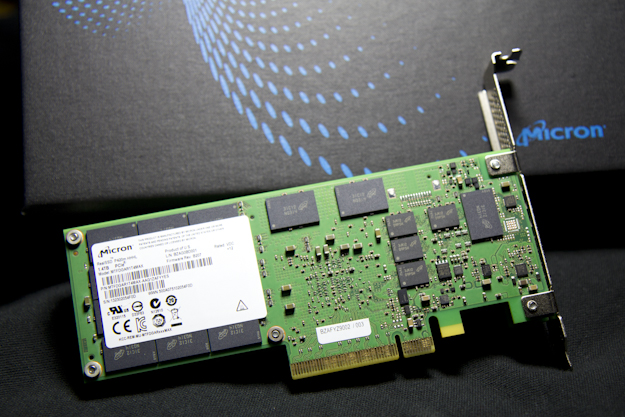The Micron P420m is a great drive that lives up to it sibling, the P320h, in terms of read performance. At 760K IOPS and over 3GB/s, it tore through our tests without breaking much of a sweat. Even with light write workloads, it still managed to produce great results. Micron, as long as the pricing is right, should be able to push this drive into more mainstream, enterprise environments.
Even with the most read-focused drives, we still perform our entire suite of tests, including write testing. If there is any fault with this drive, in terms of our tests, it would be with write performance, specifically sequential write performance. If Micron could have squeezed 1-1.5GB/s sequential writes out of it, they probably could have opened it up to other market segments. That, of course, would not be fair to this drive. This drive is meant as a read caching product, that can handle write operations, but not at the same level as reads.
As we go back and look at our initial challenge, does the P420m really do that much better than a handful of SSDs? Overall, we would say yes, yes it does. We chose the HGST SSD800MM SAS SSDs because they had the best performance we had ever seen in a 2.5″ form factor. In a completely skewed comparison, comparing just write performance, it would still take 2 HGST drives and an HBA to beat the P420m at every test. That configuration would take up more room, use the same amount of power, have less capacity and cost most. Hardly a win.
When you compare the two setups and focus on what the P420m does best, read operations, there is no comparison. Even 4 SSD800MMs could not reach random 4KB read performance of the P420m. Even for sequential reads, it would take at least 3 to match the P420m.
There are plenty of other factors to consider that were not a part of this comparison, but we wanted to know what would happen when you pit the two together.
Taking everything into consideration, the P420m is a great product and we feel it worthy of our Bronze Seal. In considering application specific tasks, this SSD has the ability to pull off some great things!
 The SSD Review The Worlds Dedicated SSD Education and Review Resource |
The SSD Review The Worlds Dedicated SSD Education and Review Resource | 


Great review. Did you know tweaktown got Sandisk’s A110 PCIe SSD to review?
Yes…as well as Tom’s. It sometimes works like that and, if you stay tuned, you may see an exclusive M.2 report in the near future that we were lucky to grab.
page four, blue graph at the bottom (4K Read Steady State, 1 Hr at QD256) shows “LATENCY (ms)” in the left vertical axis name with values from 700.000 to 800.000.
Obviously it’s NOT latency, but it is IOPS which is really fantastic result. The sentence right below the graph clearly says this, I just wanted to point out as I know Les reads these comments and I’m pretty sure he will correct the graph very quickly.
And for sure, target audience knows to separate apples from oranges so it’s really obvious for us. Not too much average Joes are going to buy 1.4TB PCIe drive for three thousands to speed up loading of Windows 7 or Near Cry or whatever the game name is 🙂
Thank you for pointing that out! Will get to it.
How do you make this nice charts ?
Does it support NVMe?
this drive does not report TRIM support 🙁